20+ Years Experience
Specialist Education Providers

Every child has the right to play, regardless of their abilities or disabilities. Building an inclusive playground not only promotes a sense of belonging and equality but also fosters a dynamic environment where children can grow together through interactive play.
This blog is your guide as we delve into how to create an inclusive playground that combines accessibility and fun, making it an enriching space where every child can soar high on swings and slide into triumphant smiles.
So hop on board as we unveil the elements of playful inclusivity and explore how they can be integrated to foster spaces that bubble with joy, laughter, and endless adventures.
Creating an inclusive playground involves several important steps. First, ensure that the playground has wide walkways, even surfaces, and easy access to buildings for individuals with disabilities.
Additionally, incorporate ground-level play opportunities such as loose parts and activity panels at eye level. It is crucial to include equipment designed for kids with disabilities, like inclusive swings with safety harnesses and wheelchair-accessible components.
Furthermore, modifying playground equipment to make it more inclusive can involve adding extra-wide slides, accessible climbing stairs, standing sandboxes, and elevated gardens.
Sensory elements should also be incorporated, such as sensory play panels and sensory experiences through equipment like slides and swings.
Lastly, providing a quiet space on the playground is necessary for kids who may become overstimulated by high levels of activity and noise.
By following these steps, you can create an inclusive playground that caters to the needs of children with SEND and fosters a welcoming environment for all kids to enjoy.
In order to create inclusive playgrounds, it is essential to address and eliminate design barriers that can hinder the participation of children with disabilities.
These barriers can range from physical obstacles to sensory limitations, all of which need to be taken into consideration during the planning and construction process.
By addressing these design barriers, we can ensure that children of all abilities have equal access to play and socialisation opportunities.
One common design barrier in playgrounds is the lack of accessible paths and walkways. Wide walkways with even surfaces are crucial for individuals using mobility aids such as wheelchairs or walkers.
Additionally, proximity to buildings or parking areas should be considered to provide easy access for children and caregivers with disabilities.
Imagine a child who uses a wheelchair trying to navigate through a narrow pathway filled with obstacles. This experience not only limits their access to different parts of the playground but also hinders their ability to interact with other children freely.
By addressing this design barrier and providing wide walkways, we create an environment where all children can move around independently and engage in inclusive play.
Addressing design barriers goes beyond path accessibility; it also involves modifying playground equipment to ensure inclusivity.
For example, incorporating adaptive swings with safety harnesses allows children with physical disabilities to experience the joy of swinging alongside their peers.
Wheelchair-accessible components like ramps or transfer points enable children using wheelchairs to access elevated play structures or platforms.
Taking inspiration from inclusive playgrounds, modifying existing playground equipment can make them more accessible for all children.
Installing extra-wide slides enables children who use mobility aids to enjoy sliding down just like their peers. Adding accessible climbing stairs or ramps provides alternatives for children who may have difficulty using traditional ladders or steps.
Aside from physical modifications, sensory elements are essential for fostering inclusivity in playground design. Sensory play panels that engage different senses, such as touch or sound, can provide valuable sensory experiences for children of all abilities.
Equipment like sensory swings or spinning devices can also create a welcoming environment by accommodating different sensory needs and preferences.
It is also important to create quiet spaces within the playground area. Some children may become overstimulated by high levels of activity and noise and may need a calm environment to take a break or regulate their sensory input.
Incorporating designated quiet areas with comfortable seating or nature-inspired elements can provide a safe space for children who require a quieter setting.
When designing inclusive playgrounds, it is crucial to consider the diverse abilities of children. Every child is unique, and their individual abilities should be at the forefront of our minds when creating play environments that cater to everyone’s needs.
By considering diverse abilities, we can ensure that all children have equal opportunities for engagement, development, and fun.
One way to consider diverse abilities is by providing ground-level play opportunities. Loose parts such as jump ropes, chalk, and balls encourage creative play and imagination.
These simple materials allow children of all abilities to engage in activities that promote socialisation and physical engagement on an equal footing.
Imagine a child who uses a wheelchair being provided with a ball and participating in an inclusive game of catch with their peers.
By offering ground-level play opportunities that are accessible to all, we create an inclusive environment where children can interact and enjoy the benefits of outdoor play together.
Another approach to considering diverse abilities is by incorporating activity panels and fixed equipment at eye level. These features allow children with varying physical abilities to engage in play experiences without feeling excluded or limited by their disabilities.
Activity panels can include interactive games, puzzles, or even musical elements that appeal to various senses.
Additionally, when designing playgrounds for children with diverse abilities, it is important to create a variety of play experiences that cater to different strengths and preferences.
For example, some children may enjoy climbing, while others prefer spinning or swinging. By providing a range of equipment and activities, we ensure that every child can find something that sparks their interest and enables them to fully participate in the playground experience.
It is also important to consider the social aspects of play when designing for diverse abilities. Inclusive playgrounds should provide opportunities for both independent and cooperative play, allowing children to interact and form friendships regardless of their abilities.
Designing spaces that promote collaboration and communication can help break down barriers and foster inclusive social interactions among children.
Designing for diverse abilities doesn’t mean compromising on fun or aesthetics. In fact, inclusive playgrounds can be vibrant, engaging, and visually appealing while still accommodating the needs of all children.
By leveraging creative design solutions, incorporating accessible elements into the overall aesthetic, and involving the input of diverse stakeholders during the design process, we can create inclusive playgrounds that are enjoyable for all.
Creating an inclusive playground requires careful planning to ensure that all children, regardless of their abilities, can fully participate in play.
This begins with understanding the principles of Universal Design, which focuses on making environments usable, safe, and healthy for everyone. The Seven Principles of Universal Design serve as a guiding framework for inclusive playground design.
By incorporating these principles into the initial planning stages, you can set the foundation for an inclusive playground that caters to the diverse needs of all children.
The selection of special needs materials and equipment is a crucial aspect of designing an inclusive playground. These materials not only support children with disabilities but also enhance accessibility, sensory stimulation, and promote inclusive play experiences for all.
When selecting special needs materials and equipment, it’s essential to consider factors such as safety certifications, durability, maintenance requirements, and appropriateness for the target age group.
Additionally, consult with experts in inclusive playground design who can provide insights into the latest advancements in accessible play equipment.
Now that we have explored the importance of inclusive playground planning and the selection of special needs materials and equipment let’s dive deeper into facilitating wheelchair-accessible activities on the playground.
When designing an inclusive playground, it is crucial to ensure that wheelchair users can fully participate in the activities. This means incorporating features and equipment that are specifically designed for wheelchair accessibility.
One of the key considerations is providing smooth and wide pathways throughout the playground, allowing easy movement for individuals using wheelchairs.
By minimising obstacles and creating level surfaces, wheelchair users can navigate the play area with greater independence.
For instance, having ramps instead of stairs can provide easy access to raised platforms and play structures for children in wheelchairs. Additionally, ensuring that all play equipment is within reach from a seated position is essential.
Wheelchair-accessible swings are another important feature to consider. These swings are designed with larger seating areas and restraints that provide support and stability for children in wheelchairs.
Including swings that allow side-to-side or forward-and-backward motion can give wheelchair users a unique experience while enhancing their overall enjoyment.
Moreover, sensory play elements such as sand tables or water play areas should be designed with appropriate access points for wheelchair users.
Ensuring that there is enough space underneath these activity stations for wheelchairs to manoeuvre comfortably allows everyone to engage actively.
It’s crucial to remember that an inclusive playground is not only about providing accessibility but also about creating an environment where children of all abilities can interact and play together.
Designing multi-level platforms or structures that include wheelchair-accessible ramps alongside traditional stairways allows for integrated play experiences.
Now that we have explored some strategies for facilitating wheelchair accessible activities in inclusive playgrounds, let’s shift our focus to another important aspect: sensory integration in play spaces.
Sensory integration plays a significant role in designing inclusive playgrounds that cater to diverse needs.
Children with sensory processing differences may require specific stimulation or the opportunity for quiet retreats within the bustling environment of a playground.
By incorporating sensory elements into the design, we can create an inclusive space that satisfies a wide range of sensory preferences.
Consider adding sensory panels or walls with various textures, colours, and patterns. These panels not only provide tactile experiences but also enhance visual stimulation.
Including musical instruments such as drums, chimes, or xylophones allows children to engage in auditory exploration while interacting with their peers.
Additionally, providing opportunities for proprioceptive input can be beneficial. This can be achieved through equipment like climbing walls or structures that offer resistance to muscle movement and joint compression, aiding in body awareness.
It is also important to create designated quiet zones within the playground for children who may become overwhelmed by excessive noise and activity.
These calm retreats can be designed with features like soft seating areas, cosy nooks, or even natural elements like plants and flowers that create a soothing atmosphere.
By incorporating sensory integration into the design of the play space, we can ensure that all children have opportunities for active engagement and sensory exploration. It promotes inclusivity by considering the diverse sensory needs of children with different abilities.
Inclusive playgrounds are designed to cater to children of all abilities, including those who may become overstimulated or overwhelmed by high levels of activity and noise.
It is important to create calm zones within these playgrounds to provide a space where children can take a break, relax, and recharge.
One way to create calm zones is by incorporating natural elements into the playground design. Imagine a quiet area with benches surrounded by trees or bushes.
The shade from the trees provides a sense of tranquillity and privacy, while the sounds of rustling leaves create a soothing ambience. This space allows children to retreat from the bustling play area and find solace in nature.
Another effective method is including sensory elements that promote relaxation and engagement with the senses. For example, installing sensory panels that engage different senses like touch, sound, or visual stimuli can help create an environment conducive to calming down.
These panels could include textured surfaces for tactile stimulation, musical chimes that emit gentle sounds, or interactive art installations that encourage creativity and imagination.
It’s also crucial to consider the layout and placement of equipment within the playground. By creating designated areas that are separate from the main play zone, children have the option to seek out quieter spaces when needed.
Placement near vegetation or strategically positioning structures for reduced noise can further enhance the calming effect.
In addition to physical design considerations, ensuring proper maintenance of calm zones is essential. Regular inspections of these areas should be conducted to address any potential hazards or wear-and-tear. Keeping them clean and tidy helps maintain their inviting and relaxing atmosphere.
A well-designed inclusive playground aims to strike a balance between active play areas and spaces for relaxation and reflection.
By providing calm zones, we not only accommodate children who require respite but also foster an inclusive environment where everyone’s needs are met.
When planning an inclusive playground, it is important to consider universal playground design principles and the different needs and behaviours of playground users.
Ensure accessibility by providing ramps, wide pathways, and accessible safety surfacing. Consider stay ability by providing facilities like toilets, water fountains, and seating for all ages and abilities.
Make sure the play area is usable for users with mobility difficulties by implementing play equipment that supports diverse body sizes, abilities, and positions.
When designing an inclusive playground, it is important to consider users with sensory or cognitive disabilities. Incorporating sensory play events can provide equal play opportunities.
Factors to consider include tangible and visual textures, equipment for soothing body pressure, auditive movement motivators, and sensory experiences like scented plants.
An inclusive playground should have varied play equipment to cater to different abilities and preferences. Choose equipment that offers physical challenges, thrilling experiences, and sensory stimulation.
Spinning, rotating, swaying, swinging, and rocking equipment can provide physical thrill, while natural features and tactile, sound, and visual elements enhance sensory stimulation.
To create a visually accessible playground, use contrasting colours and different textures strategically in the surfacing. This will assist users with vision impairments and sensory disabilities in navigating the play area.
Additionally, incorporating dramatic play elements and themed equipment can help users connect and relate to the playground.
Inclusive playgrounds are important because they create equity in outdoor play opportunities for all individuals.
Research shows that children with disabilities benefit from playing with typically developing children, as it helps them grow and develop their abilities, strengths, and self-image.
Play is essential for children’s physical, social-emotional, cognitive, and creative development.




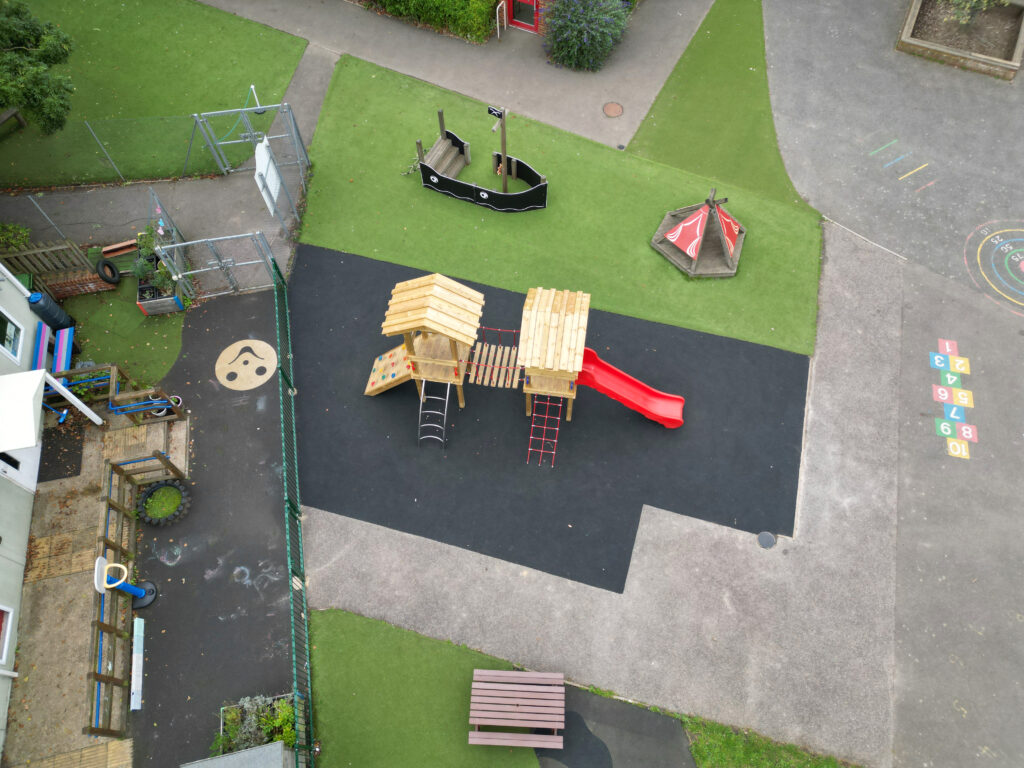

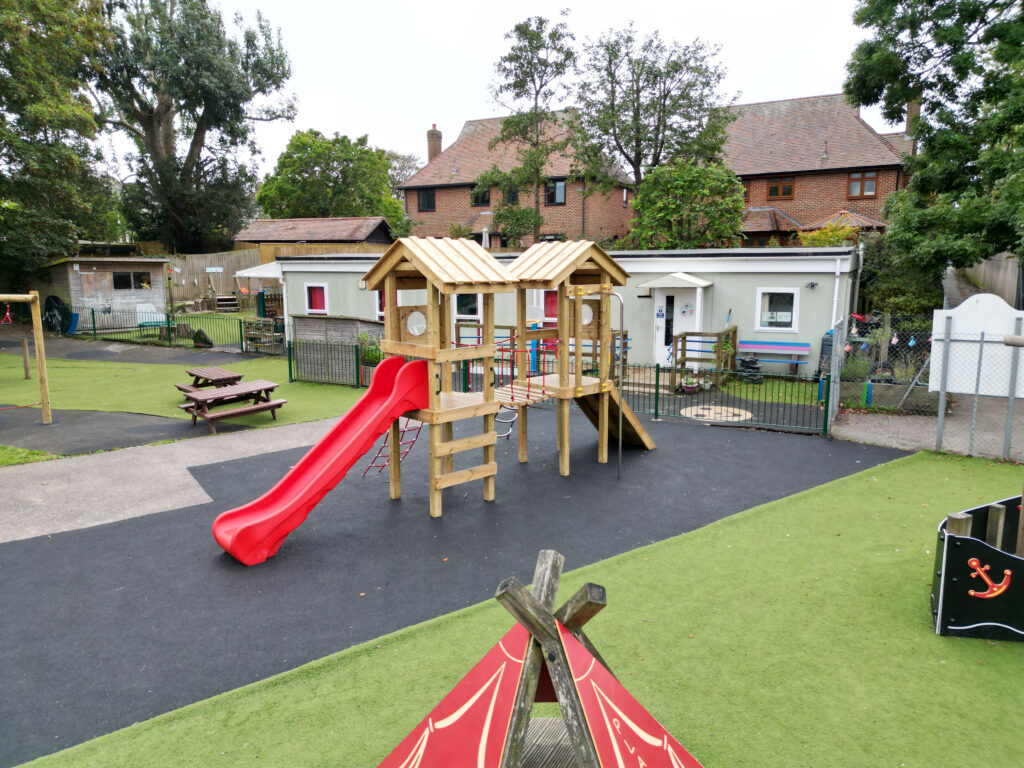
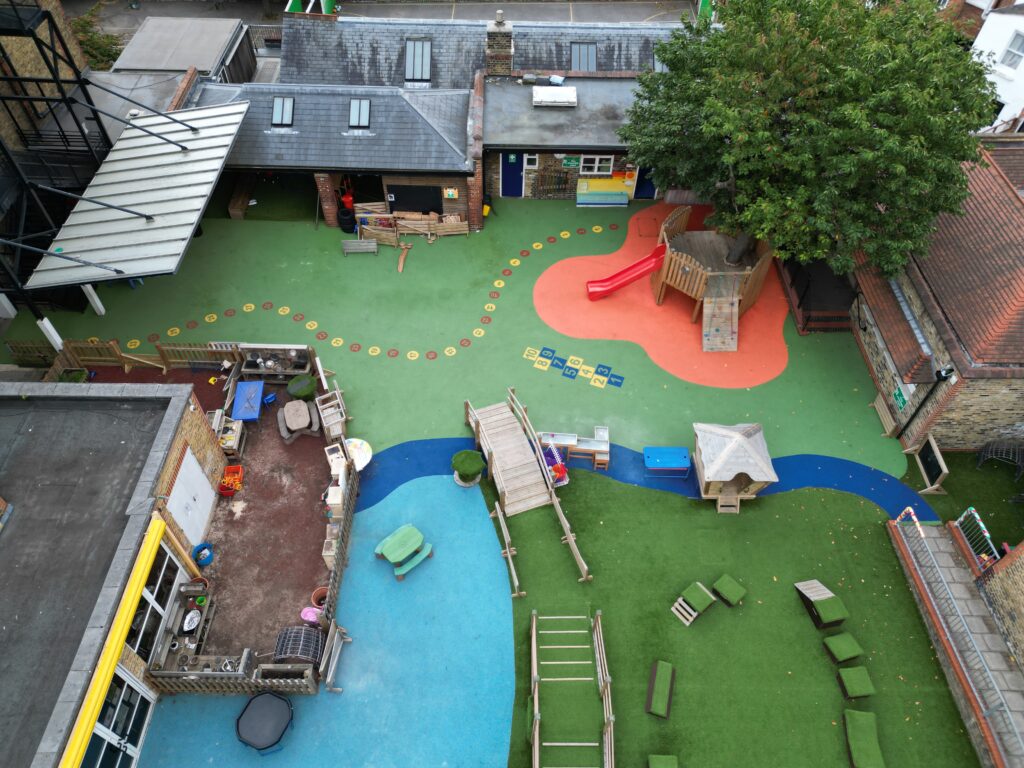






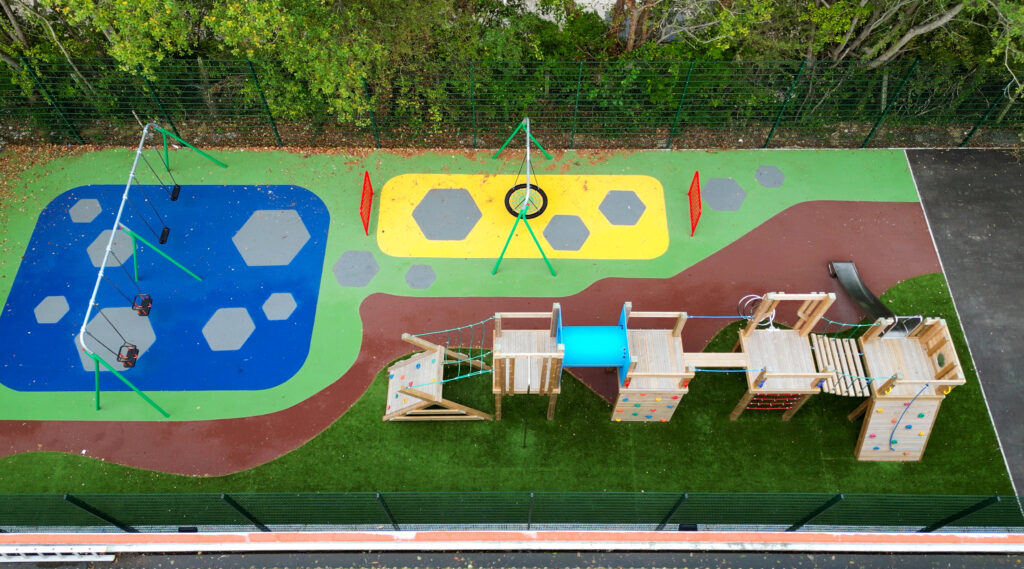










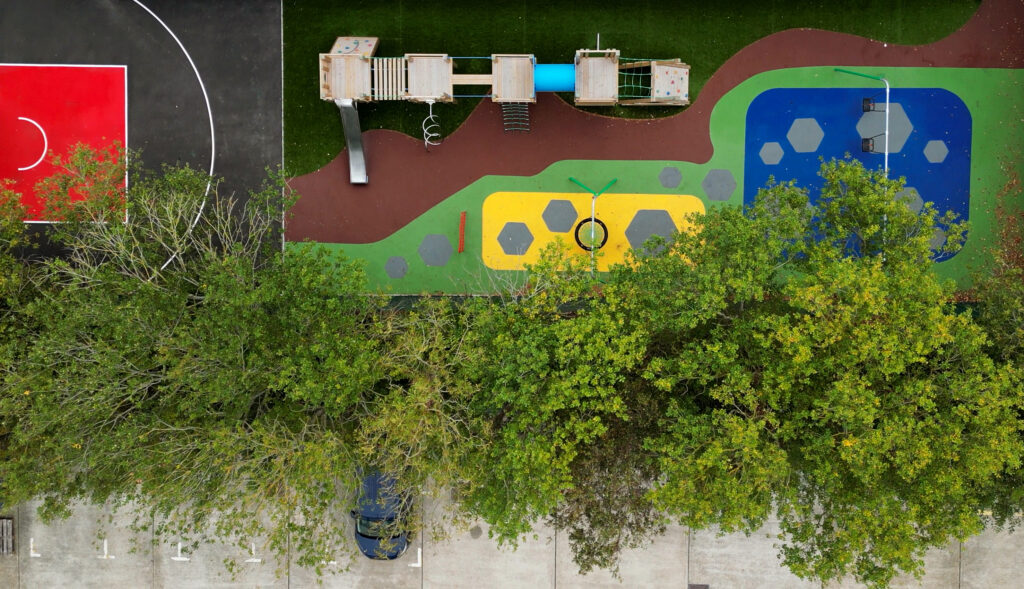









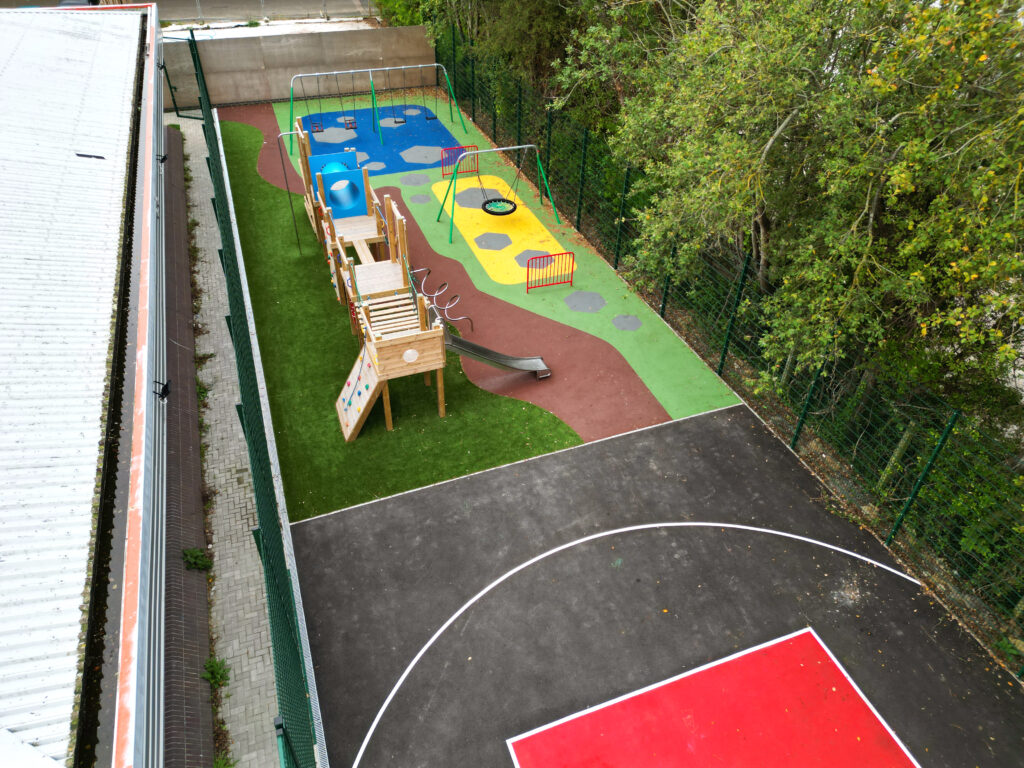



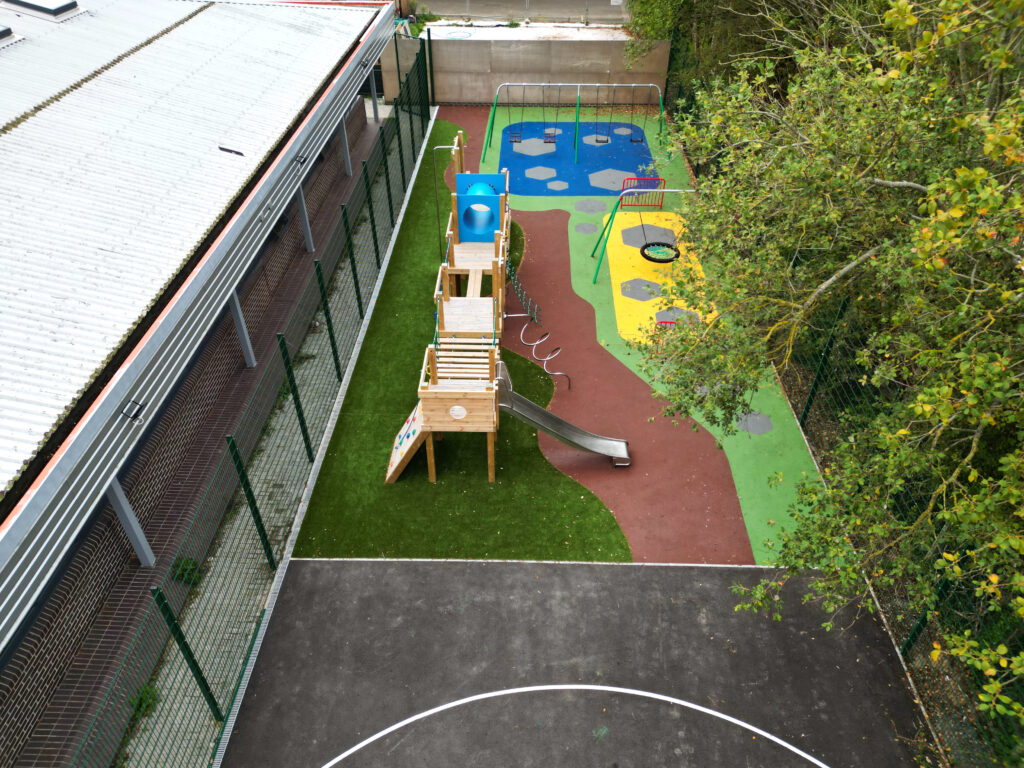







We Aim To Reply To All Enquiries With-in 24-Hours